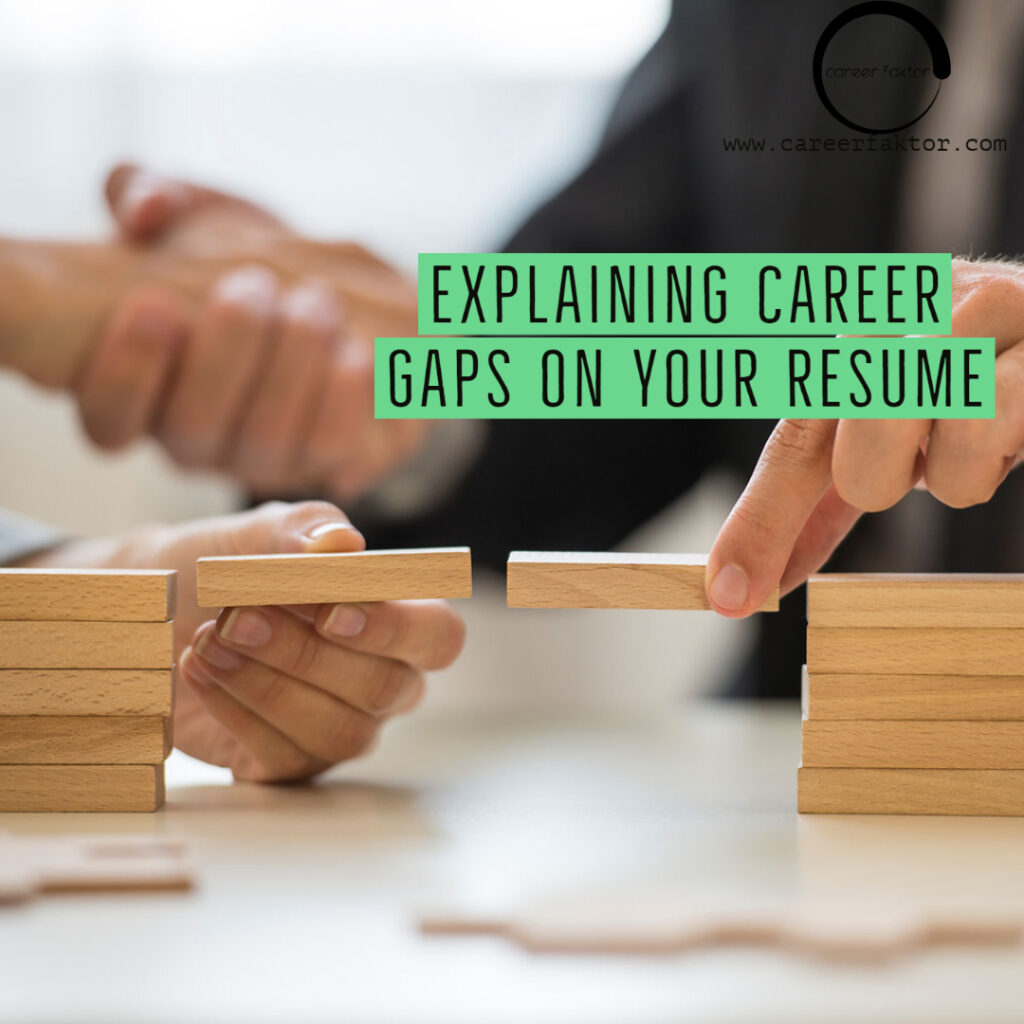Addressing career gaps on your resume can be a daunting task. Many individuals find themselves struggling with how to explain or hide these gaps effectively. However, instead of viewing them as obstacles, we can turn career gaps into opportunities to showcase growth, resilience, and personal development. By following a few essential tips, you can explain your career gaps on your resume in a way that presents you in a positive light and increases your chances of landing your desired job.
- Explain the Gap, Don’t Just Mention It: Rather than leaving the gap unexplained, it is crucial to provide a concise explanation. Keep the description short, clear, and to the point. For example, if you took time off work to care for a family member, mention it briefly, but avoid delving into unnecessary details.
- Connect Your Career Journey and Growth: Demonstrate how your career gaps fit into the larger narrative of your professional development. Emphasize the skills, knowledge, or personal growth you gained during that period. This will help the recruiter understand that you have utilized your time effectively and have continued to grow despite the gap.
- Highlight Other Achievements: While addressing the gap, it’s important to focus on your accomplishments and strengths. Showcase your achievements and experiences that are relevant to the position you are applying for. By highlighting these accomplishments, you can redirect the recruiter’s attention away from the gap and toward your valuable contributions.
- Share the Value or Lessons Learned: Describe the value or lessons you gained from the career gap. It could be an opportunity for self-reflection, acquiring new skills, or exploring different career paths. Highlighting the positive aspects of the gap demonstrates your adaptability, willingness to learn, and determination to make the most of challenging situations.
- Consider a Functional Resume Format: If your career gap is significant, consider using a functional resume format. This format emphasizes your skills, accomplishments, and qualifications rather than focusing on the chronological order of your work experience. By highlighting your abilities upfront, you can draw attention away from the gaps in your employment history.
- Utilize the Cover Letter: For longer employment gaps or situations requiring further context, incorporate the explanation into your cover letter. Use this opportunity to provide a more detailed explanation of your career gap, while still keeping it concise and focused. Highlight your readiness and enthusiasm to return to the workforce, showcasing any relevant activities or professional development you pursued during the gap.
- Prepare for Interviews: Anticipate questions about your career gaps during job interviews and have a well-prepared response. Emphasize the skills you developed during the gap, your dedication to self-improvement, and how you have prepared yourself to return to work. Your ability to confidently explain the gap will alleviate any concerns the interviewer may have.
- Explain How You Spent Your Time Unemployed: If possible, discuss how you utilized your time during the employment gap to enhance your skills or knowledge. Mention any courses, certifications, volunteer work, or freelance projects that you undertook. This demonstrates your proactive approach to self-improvement and your commitment to professional growth.
- Determine Which Jobs to Include: When listing your work experience, carefully consider which jobs to include and which ones can be excluded. If the positions held during the gap are not directly relevant to your current career goals or do not contribute significantly to your overall professional narrative, it may be appropriate to exclude them. Prioritize relevancy and highlight experiences that best showcase your qualifications for the desired role.
- List Longer Employment Gaps as a Separate Job: For extended periods of unemployment, consider listing the gap as a separate job on your resume. Use this section to briefly explain the reason for the gap and provide a summary of the activities you engaged in during that time. This approach ensures transparency while maintaining a clear chronological structure in your work history.
- Honesty Is Key: Lastly, it is crucial to emphasize the importance of honesty. While it may be tempting to exaggerate or fabricate details to conceal career gaps, the risks outweigh the benefits. Employers value integrity and transparency, and dishonesty can have severe consequences. Be truthful in your explanations and focus on the positive aspects of your gap.
Explaining career gaps on your resume can be challenging, but with the right approach, they can become opportunities to showcase your resilience, growth, and determination. By following these tips, you can address employment gaps in a way that presents you in a positive light, allowing potential employers to focus on your achievements and qualifications rather than the gaps in your work history. Remember, each gap has its story, and how you present it can make a significant difference in shaping your professional image.
Stay tuned and follow me for more such actionable #careerinsights
✍️ Connect with me to get a professionally written resume, cover letter & LinkedIn profile optimised.

